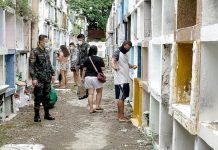
FOR THE past decade, our governance has been careful about incurring further indebtedness.
A frequently used and, I believe, a helpful statistic is to monitor the debt/gross domestic product (GDP) ratio. In 2009, this ratio reportedly reached a peak of 74.5 percent. This is high, but our continued GDP growth enabled the Philippines to service our debts without too much difficulty. Nevertheless, the ratings agencies were not altogether relaxed about our situation so that for several years we were rated as “below investment grade”.
The Aquino administration (2010-2016) was careful (too careful according to some) not to overspend. As a result, our debt to GDP ratio sank to below 50 percent.
A major platform of the Duterte presidency has been to reduce poverty. Results were gratifying. From 2016 to 2019, poverty levels reduced to 18 percent – much lower than in previous administrations.
The pandemic has pushed poverty incidence upwards. Can we do anything about this?
The short answer is yes. The downside, however, is that our debt to GDP ratio will increase.
As indeed it has.
By the end of 2020, this had increased from a low of 40 percent to 57 percent. A cause for concern but is manageable.
What should we do?
There are historical parallels.
The year 1929 saw the onset of the Great Depression in the United States. This caused an enormous increase in unemployment. In 1933, incoming president Franklin Delamo Roosevelt launched an ambitious spending program (‘The New Deal’). Major infrastructural programs, which generated much employment, were instituted. One famous example what that of the Tennessee Valley Authority which was successful and which helped to significantly reduce unemployment levels.
Now, incoming US president Joe Biden is also proposing to install a substantial spending program. At his State of the Union address last week he had enthusiastic support from his Democratic Party. Not unexpectedly, however, there were glum faces from his political opponents from the Republicans.
In the next week or so, the US Congress will debate whether or not to approve Biden’s spending proposals.
It is worth noting that the Debt/GDP ratio in the US is already over 100 percent – much higher than the Philippines.
***
I was disappointed to hear that the Department of Public Works and Highways (DPWH) feasibility study is on the Iloilo-Guimaras bridge is deemed not to be a priority.
Feasibility studies during the pandemic need to be analyzed carefully so that we can fully take into account all the benefits obtainable. In particular, there are significant employment, and therefore poverty alleviation benefits.
We also need transparency so that we can verify that DPWH is fully aware of all achievable benefits.
Even if the Iloilo-Guimaras bridge may not be a priority, I believe that the complete project of Iloilo-Guimaras-Negros could produce better returns. Senator Cynthia Villar pointed out that whilst Iloilo is very progressive, but Guimaras is not.
Maybe so.
But Negros, like Iloilo, is also very progressive. This means that the Iloilo-Guimaras-Negros project will produce better returns that Iloilo-Guimaras.
In fact, Guimaras will also obtain significant domestic tourism benefits from both Iloilo and Negros if the full project were implemented.
Did the DPWH study take this into account?
More transparency, engendering an articulate debate, would be helpful.
Let’s make it happen!/PN





